You have no items in your shopping cart.
There are different knives that we can use in a kitchen. Which to choose? Find all our advice for choosing a kitchen knife, particularly by their size, width, rigidity or flexibility. Also, according to the uses, we will detail the types of adapted knives.
You can choose different kitchen knives which are very different in size, width, rigidity or flexibility.
We will advise you according to different situations, which knives to choose?
Peel a fruit or a small vegetable, cut a small fruit or vegetable
To carry out this operation, you must have a knife which holds well in hand, with a small blade: a paring knife.
This knife can be pointed, rounded, in the shape of a bird's beak. It is very handy and when we use it, our hand is very close to the food to have a better feeling.
It is the first knife to have.
It will allow you to peel an apple, a pear, a potato. You can use it to prepare the strawberries, cut them in half.
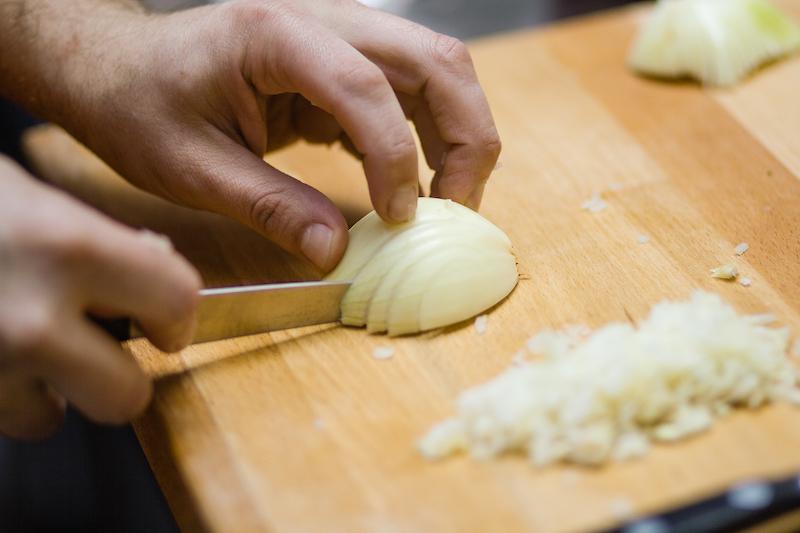
Peel a large fruit or a large vegetable
You will need 2 knives.
To cut the food into 2 parts or several parts, you will need a knife with a wide blade at least 20 cm. The chef knife will be required.
By holding the vegetable with one hand and the handle of the knife with the other hand, you can cut the vegetable in 2 from top to bottom in a straight line.
The width of the knife allows you to cut it straight. The thickness of the blade allows you to force on the knife.
Then, you will take a paring knife to peel it.
To cut it into small pieces, you can reuse a vegetable style kitchen knife 15 cm or a chef's knife like a 20 cm kitchen from our Authentic series for example.
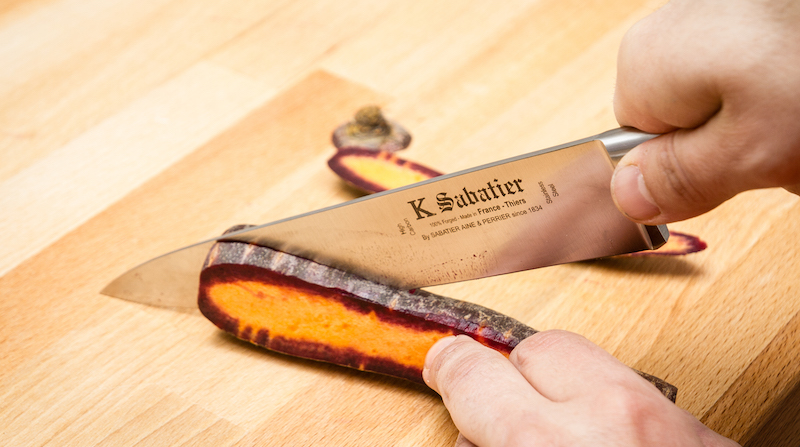
Cut slices of roast pork, beef, veal
A roast has no bones. The slices must be cut in a straight line.
You must take a chef knife: wide blade knife, length 20 to 25 cm
You can hold the roast with a bayonet fork or curved fork.
This cutting can also be done directly at the table with your guests.
Cut slices of a leg
A leg has a bone. To cut thin slices, it is necessary to follow the bone.
This operation will not be possible with a chef knife. The blade is too wide.
You should use a narrow blade knife like:
It will be necessary to maintain the leg with a fork.
Cut a poultry
We are going to talk about poultry like hens, ducks, turkeys.
It is necessary to hold the poultry in place using a fork. For the knife, it is better to have a knife with a narrow blade, about 20 cm in length. A slicing knife or carving knife will be very suitable.
Attention, when cutting the wings and the kitchens, do not make tension with the knife to separate the 2 bones from the joint. Above all, do not force it because the knife, which is made of slightly hard steel, can be damaged. Make a straight move.
You can also use a boning knife if the poultry is small. This knife is very handy given the length of its blade.
Cut vegetables
A knife is very interesting for tomatoes, citations, oranges that we want to cut into slices. This is the tomato knife.
Small handle, toothed blade 13 cm long.
These teeth cut the fruit without forcing.
For cutting other vegetables, we can use a vegetable knife whose blade is wider with a length of about 15 cm
The air pocket oriental knife is also very appreciable for this type of cutting.
Cut bread, brioche, cake
We offer bread knives. The blade is narrow and toothed. Its length is more than 20 cm.
With a bread knife, you can cut your bread as you wish: thin slices, thick slices.
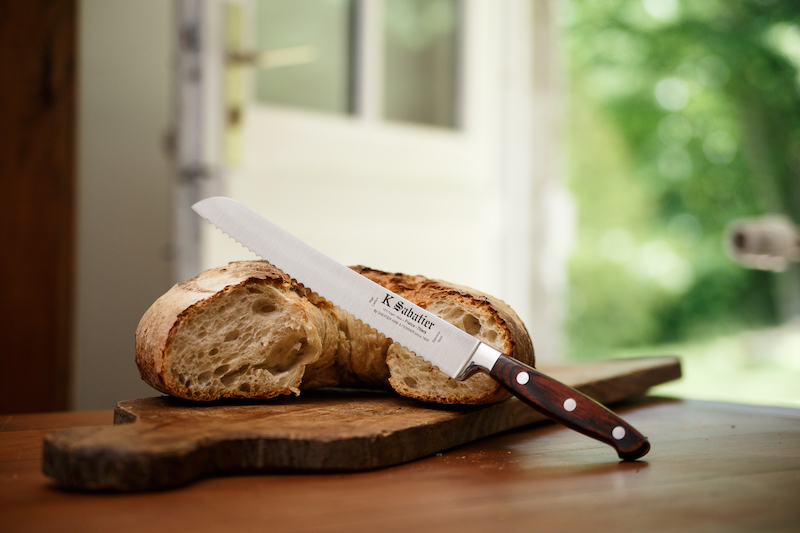
Cut a fish
The choice of your knife will depend on the fish you want to cut.
If it is a large fish that you want to slice, you have the choice between:
- a chef knife with a wide blade
- a tooth knife: serrated ham or bread knife
- If you want to lift the fillets of a fish, you need a knife with a narrow and flexible blade. It is the filet knife which exists in 15 or 20 cm
- If you want to slice a smoked salmon, we recommend the air pockets salmon knife. Its blade is thin, a little flexible and its cells allow to create air pockets between the blade and the salmon so that the latter does not stick to the knife
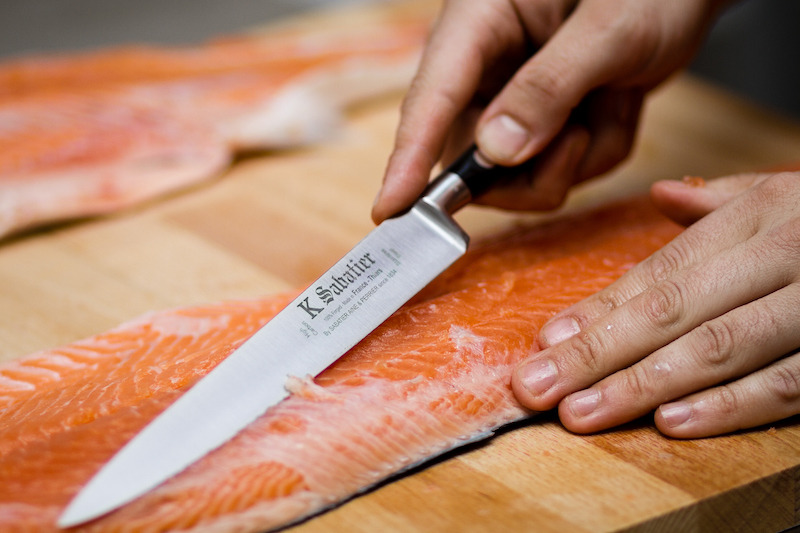
Cut a ham
If you are lucky enough to have a ham, to cut it, you will need several knives.
The ham rind is often very hard. It should not be cut with any knife. You can use a boning knife. Its blade is thin, of good length and very rigid.
When the rind has been removed, you will use a ham knife. It allows you to make thin and regular slices thanks to its narrow and very long blade.
To make chiffonade, you can also use a filet knife.
Cut a piece of beef
For this you will need a boning knife. Its thin and rigid blade will help remove the meat from the bone.
Then, to cut the meat into pieces or slices, use a chef knife with a wide and rigid blade.
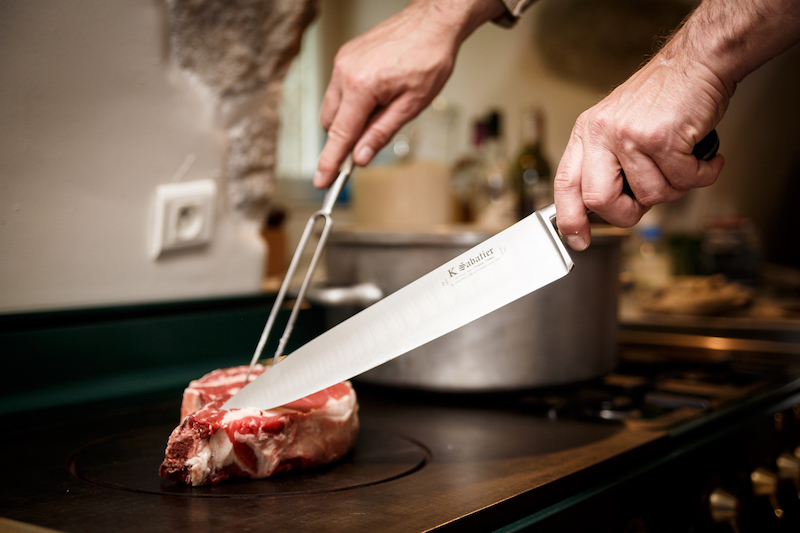
Knife maintenance
Be careful, your knives must cut. It is always dangerous to use a knife that does not cut. You will force and this can lead to accidents.
To maintain a knife, you need a sharpening steel.
The gesture is simple and easy to perform. You don't have to be quick.

